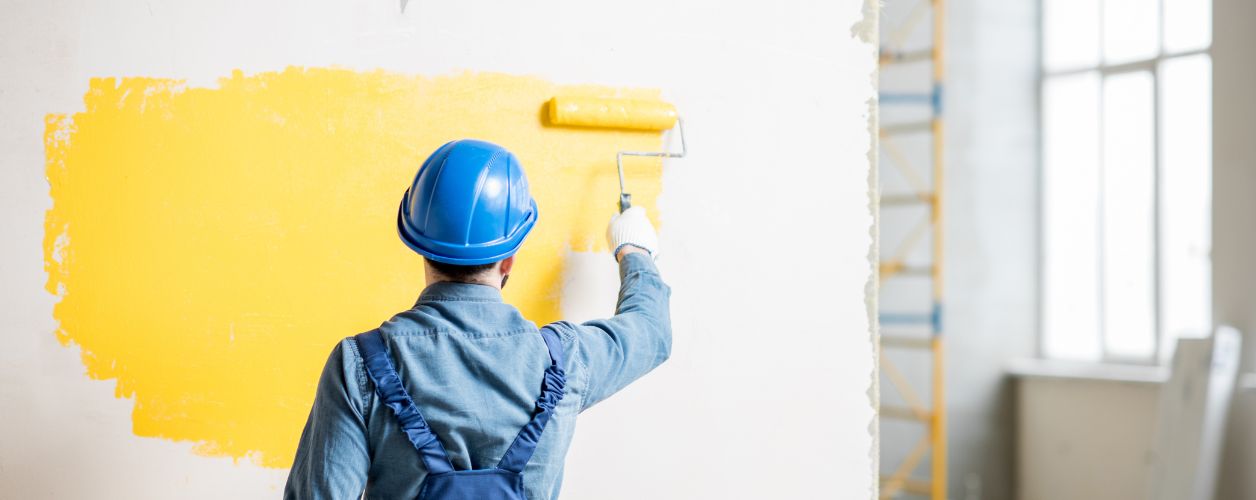Get free quotes within minutes
How to Choose the Best Interior Paint Colors for Modern Homes

Table Of Contents
- Introduction
- How Colors Affect Mood And Perception
- Choosing Colors For Specific Rooms In Modern Homes
- Popular Paint Colors For Modern Homes Interior Painting
- Lighting Considerations For Interior Painting
- Room Size and Function Of Interior Painting
- Creating A Cohesive Color Palette
- Using Paint to Highlight Architectural Features
- Practical Tips For Choosing Paints for Modern Home Interiors
- Common Paint Color Mistakes To Avoid
- Conclusion
Modern homes are celebrated for their clean lines, open layouts, and a focus on simplicity and function. One of the most effective ways to highlight these features is through the strategic use of interior paint colors. The right palette not only reflects natural light and enhances spaciousness but also sets the tone for the entire living space. Unlike traditional styles that may rely heavily on patterns or ornate detailing, modern interiors thrive on a more minimal, harmonious aesthetic, and paint plays a crucial role in achieving this.
Choosing the best interior painters and colors for a modern home involves more than just picking what looks good in a sample. It requires an understanding of how colors interact with architecture, furniture, lighting, and mood. Neutral tones, muted hues, and even bold accent colors can all work in modern homes when applied thoughtfully. Whether you're aiming for a serene and airy atmosphere or a bold, statement-making interior, the paint color you choose becomes the canvas for your modern design vision.
In this guide, we’ll explore key principles, trending palettes, and expert tips to help you choose the best interior paint colors that elevate and define modern living spaces.
How Colors Affect Mood And Perception
- Red: Indicates energy, passion, and urgency. It can be good in an active setting, as it raises blood pressure, but can also be overpowering in larger quantities.
- Blue: Soothing and tranquil; associated with trust and peace. It works wonders in bedrooms and bathrooms for relaxing.
- Yellow: Bright and cheerful, it's associated with optimism and creativity. Works well in kitchens or dining areas, but too much can be irritating.
- Green: Balance and harmony. Good to ease the eyes and works for the color of a living space or home office, where a calming and focused ambiance is required.
- Orange: Warm and energetic, builds enthusiasm and appetite. Perfect for social settings such as dining rooms or workout areas.
- Purple: Usually associated with luxury and creativity. Light shades of purple (lavender) have a calming effect on bedrooms, while darker shades suit more formal settings.
- White: Pure and clean, even more than all the other colors; gives a feeling of space and openness. Works for small rooms but might feel sterile unless accented.
- Black: Highly dramatic and elegant; reserve for accents to add depth and contrast.
Choosing Colors For Specific Rooms In Modern Homes
Bedroom Colors
- The bedroom is tranquil and relaxing in soft tones.
- Soft colors with plenty of white light blue, lavender, sage green, and pastel shades tend to create an overall atmosphere for restful peace.
- These colors help you relax and sleep, reducing stress and anxiety.
Living Room Colors
- The living room is warm and inviting.
- Warm neutral shades like beige, taupe, and warm grays make a cosy base.
- Add accents in earthy tones such as terracotta and olive green or deep shades like navy and burgundy to add some weight and comfort to the room.
Home Office: Energizing and Focused
- Like soft yellow, light orange, or green, stimulating colors are intended to develop creativity and energy.
- Avoid super brightness or too much darkness, which will ultimately strain eyes or cause fatigue.
Kitchen: Fresh and Inviting
- Pure white, light grey, or soft green keeps the space clean and fresh.
- Bright accents of red or yellow stimulate appetite and conversation.
Bathroom: Clean and Serene
- Very light shades of blue, pale grey, and white create an atmosphere of spa treatment and cleanliness.
- An aqua or seafoam touch would be a refreshingly active spin.
Dining Room - Warm and Social
- Rich deep reds, burnt oranges, or dark greens increase appetite and conversation.
- Combine with neutral trim for balance.
Popular Paint Colors For Modern Homes Interior Painting
Neutral Tones (Timeless & Versatile):
- Whites: Pure White, Chantilly Lace, and Simply White continue to be classics for a clean, modern backdrop.
- Greys: Soft greys like Repose Gray and Classic Gray Apple are warm and sleek.
- Beiges: Greige tones like Accessible Beige and Edgecomb Gray embody a coolness that keeps them from appearing too warm.
Bold Accents (Rich & Sophisticated):
- Navy: Rich blues, such as Hale Navy and Naval, are in vogue for accent walls, cabinetry, and doors.
- Charcoal: Colors like iron ore and peppercorn offer a gravity of contrast in today's clean interiors.
- Forest Green: Evergreen Fog and Backwoods put a grounded, organic feel to it.
Trending Colors (2024-2025):
- Peach Fuzz (Pantone Color of the Year 2024): A soft, warm peachy shade found in the bedroom and bathroom.
- Blue Nova (Benjamin Moore 2024): A concoction of violet and blue shading for bold yet calming spaces.
- Cracked Pepper (Behr 2024): A boldly charcoaled black for dramatic accents.
- Limitless (Valspar 2024): A buttery beige-yellow shading to brighten the warm interiors.
These shades speak to an increasing interest in nature-inspired hues, stark contrasts, and tranquil neutrals layering within modern home decor in America.
Lighting Considerations For Interior Painting
Lighting is an important element of interior design that can greatly alter the color and perceptions of a space. Variations in natural light occur throughout the day and with the position of the sun, altering the color appearance according to time and direction.
Morning light is usually cooler, while afternoon light tends to be warmer, providing added warmth or dullness to different hues. In this way, south-facing rooms usually receive more constant daylight, creating the best condition for color interpretation.
With artificial lights, it depends on the type of bulb one is using. Incandescent bulbs cast a warm yellow light that complements warm colors but distorts the true state of the cooler colors. Fluorescent lights will cast a bluish light, while LED lights come with the full spectrum of colors-from cool to warm. Such differences have a strong bearing on the appearance of similar paints, fabrics, and finishes.
Hence, colors should always be tested before decision-making, both under natural and artificial lighting. Paint samples should be observed at different times of the day and about the specific light source used in that particular space. This will help ensure that the colors chosen will appear as desired, no matter the type of lighting.
Taking the time to think about how lighting will affect an atmosphere will save money by avoiding huge mistakes and help create a well-coordinated and good-looking environment.
Room Size and Function Of Interior Painting
- Color and Perception of Space:
Room space is effectively styled by the use of color. Bright and light colors like pale soft blues, light greys, whites, and pastels can create the perception of increased space in a small room by reflecting light, giving an airy appearance, and, thereby, breaking the visual boundaries illusionistically, as this color range tends to make reality appear enlarged. Such an illusion may be enhanced by employing a glossy or satin finish. - Best Shades For Small Vs Large Rooms:
Dark and warm colors can make big rooms feel more intimate and cozy; colors like heavy green, navy, charcoal, or burgundy absorb so much light that they make big spaces feel a lot more grounded and inviting. Great colors for rooms with a lot of natural light from high ceilings or large windows would be those shades. - Use Of The Space and Colors:
Another factor to consider while choosing colors ought to be the use of the space. Soft neutrals or light blues suit a calming bedroom, while balanced warm tones may complement amiable social living areas. In other words, light colors will brighten and expand, whereas dark colors will help to calm and enclose, thus configuring the whole being of that particular space per its feeling and use. Thus, color becomes an easy yet highly effective way to enrich the perception of the room size and the room function.
Creating A Cohesive Color Palette
A well-coordinated color palette is crucial for harmony and visual flow in open-concept spaces. Without many walls or clear divisions, colors have to flow smoothly from area to area. Start with a dominant color that creates an attitude for the whole space; in most cases, this would be a neutral hue or soft color that can serve as a layering base for other accent colors. Create a slow color flow that moves the eye through the space, repeating quiet color elements from one room to another to make the design cohesive but not too monotonous.
The color wheel comes into play. Colors that are divergent on the wheel contrast nicely; are rather similar or adjacent give a calm and cohesive presentation. If you're also working with digital visualizers provided by paint brands, you can virtually experiment with your colors, which makes it easier to grasp their cohesion across rooms and in various lighting conditions. These virtual modelling tools help witness realistic color flow through open conceptual floor plans, where each zone can feel differentiated but still interlinked. With all these approaches and tools in hand, you can make out a seamless and expressive space.
Using Paint to Highlight Architectural Features
Painting architectural detailing, such as trims, ceilings, and built-ins, can dramatically enhance the character of a room. You can pick a contrasting or complementary color that will highlight crown moldings, baseboards, or window casings. A ceiling painted in a subtle color other than white adds depth and warmth to a room, while bright colors for built-ins attract the eye and create a focal point. A glossy finish accentuates the details by reflecting light, which enhances dimension. The right combination of paint color and finish can make these often neglected elements stand out as design features that add charm and sophistication to your home's interior.
Practical Tips For Choosing Paints for Modern Home Interiors
- Sample Before Committing: You must try paint samples on your walls before investing a great amount into them. It is because these colors can behave differently under a variety of light and time situations.
- Use Sample Boards or Direct Wall Patches: Sample patches on different walls, and try foam boards that you can move around. It will prepare you for understanding how colors may behave according to the density of illumination as well as angles.
- Consider the Room’s Lighting: Cool colors tend to hide dullness in low light, while warmth fills space in bright circumstances. It brings new light, not only natural ways, to an artificial light level to affect a painted wall.
- Coordinate with Existing Elements: For a complete look, paint colors that correspond with or contrast with furniture, flooring, and decorative items. Fabrics should be hand-carried, or the images made for paint selection.
- Try Paint Brand Tools: You can appraise colors using samples of virtual painting by using well-known brands such as Sherwin-Williams, Benjamin Moore, or Dulux to preview in sample rooms or uploaded homes.
- Hire a Color Consultant: An expert will help you narrow down the options depending on the design goals, space function, and lighting, which is likely to save time and expensive errors.
- Long-Term Choices: Long-considered colors are developments of taste over the years. Trendy shades seem dated quickly; timeless neutrals are around for more adaptation.
Common Paint Color Mistakes To Avoid
- Ignoring Lighting Changes: The same paint may appear different under natural light than under artificial light. Always try testing colors in the precise room at different times of the day.
- Omitting Samples: Never choose paint just from a swatch; apply it to a wall, live with it for a few days before comparison.
- Forgetting Undertones: Colors usually have small undertones (blue, green, pink, etc.) that may not go with the existing décor. Compare against furniture and the flooring.
- Choosing Trendy Colors Blindly: Trendy colors may be in vogue, but may be inappropriate for your space. Go for what suits your space and lighting rather than just trends.
- Ignoring Flow Between Rooms: These colors should flow together in the case of open homes or adjoining rooms, as connecting spaces with clashing colors could be a cause for discord.
- Too Much Saturation: Bright or dark colors can make a room feel very intimidating. Mix bold colors with neutrals and make sure that the weight and chaos aren't too heavy or chaotic.
- Forgetting About It in the Ceiling and Trim: All these add up to a complete look. Clean and matching trims and ceilings accent that extra pop wall color brings.
- Skipping Primer: The important part is that primer ensures a correct, even coverage and a true color payoff. Do not skip it whenever you want to go for a very drastic color change.
- Choosing in the Store: Store lights are deceiving when it comes to paint. So always test your color in your area before setting it as final.
Conclusion
It is not only choosing an interior painting trend but also creating a place where it reflects the style of the occupants while allowing proper natural light and complementing furniture inside. Now, think about the highly personal room functions and source foliage, study the color psychology, and ensure your selections are consistent throughout the home.
Embodying a modern and timeless interior painting aesthetic can be achieved with bold hues or soft neutrals. Above all, the right palette can either elevate a space or make a house feel appropriate for its inhabitants.
YOU MIGHT ALSO BE INTERESTED IN

How to Choose the Best Interior Paint Colors for Modern Homes
Capital Cities
- Painters Services in Montgomery
- Painters Services in Juneau
- Painters Services in Pago Pago
- Painters Services in Phoenix
- Painters Services in Little Rock
- Painters Services in Washington, D.C.
- Painters Services in Washington, D.C.
- Painters Services in Washington, D.C.
- Painters Services in Sacramento
- Painters Services in Denver
- Painters Services in Hartford
- Painters Services in Dover
- Painters Services in Washington, D.C.
- Painters Services in Palikir
- Painters Services in Tallahassee
- Painters Services in Atlanta
- Painters Services in Hagåtña
- Painters Services in Honolulu
- Painters Services in Boise
- Painters Services in Springfield
- Painters Services in Indianapolis
- Painters Services in Des Moines
- Painters Services in Topeka
- Painters Services in Frankfort
- Painters Services in Baton Rouge
- Painters Services in Augusta
- Painters Services in Majuro
- Painters Services in Annapolis
- Painters Services in Boston
- Painters Services in Lansing
- Painters Services in Saint Paul
- Painters Services in Jackson
- Painters Services in Jefferson City
- Painters Services in Helena
- Painters Services in Lincoln
- Painters Services in Carson City
- Painters Services in Concord
- Painters Services in Trenton
- Painters Services in Santa Fe
- Painters Services in Albany
- Painters Services in Raleigh
- Painters Services in Bismarck
- Painters Services in Saipan
- Painters Services in Columbus
- Painters Services in Oklahoma City
- Painters Services in Salem
- Painters Services in Ngerulmud
- Painters Services in Harrisburg
- Painters Services in San Juan
- Painters Services in Providence
- Painters Services in Columbia
- Painters Services in Pierre
- Painters Services in Nashville
- Painters Services in Austin
- Painters Services in Salt Lake City
- Painters Services in Montpelier
- Painters Services in Charlotte Amalie
- Painters Services in Richmond
- Painters Services in Olympia
- Painters Services in Charleston
- Painters Services in Madison
- Painters Services in Cheyenne






